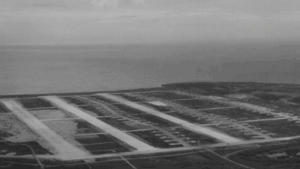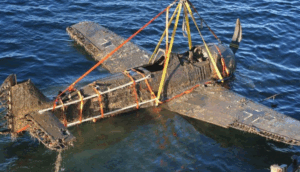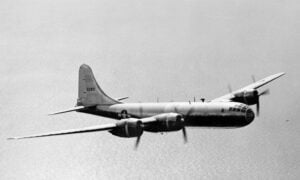The Story of the Lone Pilot Who Takes on 60 Enemy Planes With His P-40 Warhawk

World War Pictures / Facebook
A Sudden Attack Over Assam
On December 13, 1943, the skies over Assam, India, were full of tension. Second Lieutenant Philip Adair, a pilot with the 80th Fighter Group, saw movement in the distance. What looked like a small enemy raid soon turned into something much bigger. Over 60 Japanese planes were heading straight for his base, including dozens of bombers with fighter escorts above and below.
Adair flew a Curtiss P-40 Warhawk he called Lulu Belle. He quickly realized the enemy force was much larger than expected—four groups of bombers, each with six planes, along with layers of escorting fighters. He knew his base held soldiers, a hospital, and key supplies. If the bombers reached it, the damage would be terrible.

Adair Strikes First
Knowing the odds were against him, Adair climbed fast and aimed straight for the bombers. Attacking the fighters first would only warn the formation, so he stayed high, dived in, and fired from long range. His first shots disrupted the bomber group, making them break formation. He hit one bomber’s left engine, sending it up in flames.
But then the enemy fighters closed in. Japanese Zero fighters rushed toward him. He escaped through a sharp dive and a negative-G roll. When he looked back, he saw something unexpected—the bombers had already dropped their payload, but their bombs had missed the target. Some believe Adair’s early attack may have thrown off their timing.

One More Pass
Most pilots would have pulled away, but Adair returned. He climbed behind the enemy bombers and prepared to make another run. This time, though, the escort fighters spotted him first. With no path to the bombers, he picked out a fighter instead.
He fired at a Zero, hitting it hard. Its landing gear dropped, and its engine caught fire. The plane spiraled down into the jungle. But before Adair could take another shot, more fighters arrived. He dived again to escape, but this time he took hits. His plane caught fire, and his controls were damaged. He managed to blow out the flames in a dive, but he could no longer level the aircraft.

Struggling to Return
With fuel running low and the plane dropping fast, Adair tried everything to stay airborne. He even tied his seatbelt to the control stick. Then, he saw a wounded enemy fighter nearby. Though out of ammunition, Adair dove after it anyway. The Japanese pilot fired but missed. Adair escaped again.
As his fuel tank neared empty, he came up with an idea—he flipped the plane upside down. The engine started running smoothly again. He flew like this, switching back and forth, fighting to stay in the air.

A Risky Landing
At last, he reached his base. He lowered the landing gear while still upside down and flipped upright just before touching down. Against all odds, Adair landed safely.
This was his 44th combat mission. He later said it was his luckiest and most intense. For his actions that day, Philip Adair received the Silver Star. His squadron, the Burma Banshees, continued to serve with distinction in the China-Burma-India theater.



















